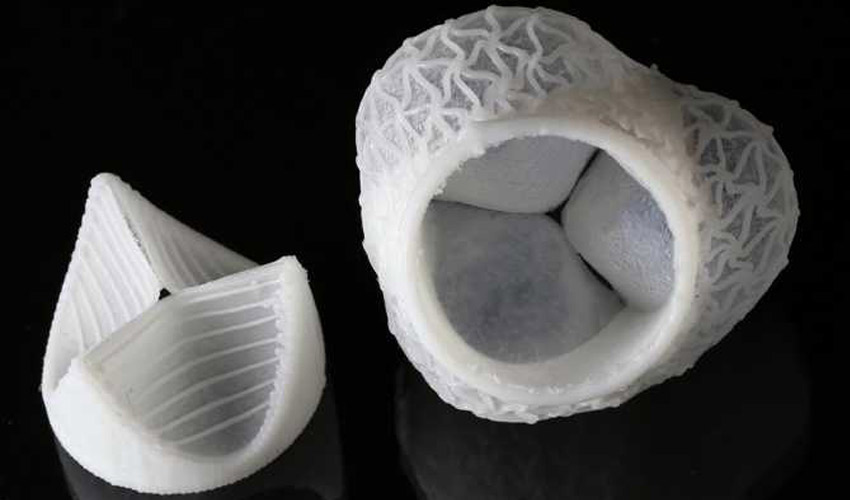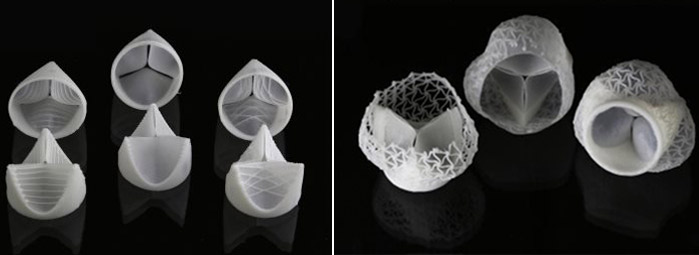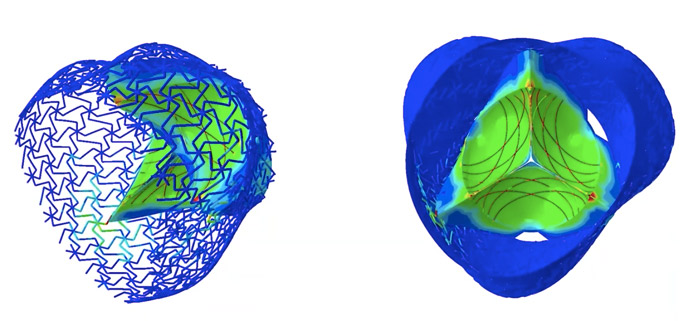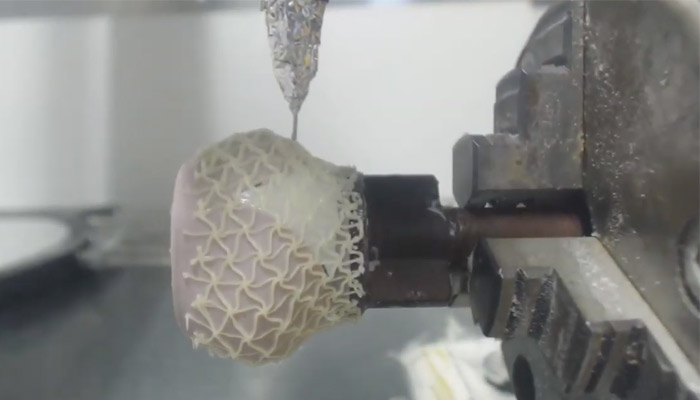3D Printed Heart Valves from Silicone

A team of researchers from ETH Zurich has teamed up with South African company Strait Access Technologies to create artificial 3D printed heart valves from silicone. These could serve as replacement valves for an aging population – they represent a viable solution as they are easier to manufacture and much more accessible than those that already exist on the market today.
According to a study published by Sewell-Loftin MK, 850,000 people worldwide will need artificial heart valves by 2050 due to an aging population, lack of physical exercise and poor nutrition. Additive manufacturing could provide a way to meet this important need: in the medical sector, it allows each device to be personalised to the patient. So we could have 3D printed valves, designed according to the heart of each person. ETH Zurich and Strait Access Technologies are anticipating this demand by carrying out initial silicone tests.

Credits: Fergal Coulter / ETH Zurich
Before explaining the process of creating these 3D printed valves, it is important to review their role. Our heart consists of four chambers, each with a valve that allows the blood flow to move in one direction only. If one of the four valves does not work properly (leakage, narrowing, distension), blood returns to the atria or ventricles, weakening the heart. This is why arrhythmias and heart failures are observed. This is where artificial valves come in: they can be inserted to ensure good blood flow.
A 3D printed valve in less than two hours
It all starts with a CT scan of the patient’s aorta: this makes it possible to determine very precisely the shape and size of the failing heart valve. The data is then transformed into a digital model on which the forces acting on the heart valve and its potential deformation will be calculated. The researchers explain that it then takes 1.5 hours to 3D print the artificial valve (compared to several days for a traditionally designed valve). They opted for silicone because it is a material compatible with the human body – the 3D printed valve can then be reinforced with collagen fibers that add thickness. The team says that the blood flow through the 3D printed artificial heart valve is as good as that of a traditionally manufactured valve.

The 3D scan of the patient’s aorta | Photo Credit: Fergal Coulter / ETH Zurich
Ultimately, the objective will be to extend the life of these replacement valves from 10 to 15 years. Currently, this is the lifespan of artificial valves in patients before they need to be replaced. Manuel Schaffner, one of the study participants, explains: “It would be wonderful if we could one day produce heart valves that would last a lifetime and could even grow with the patient, so that they could also be implanted in young people. It should be noted that today most patients must take immunosuppressants or anticoagulants for life to prevent the body from rejecting the artificial valve, producing significant adverse side effects. Additive manufacturing could therefore completely eliminate this risk.”
3D printed valve
The first results are encouraging, but it will take another 10 years before artificial 3D printed heart valves are on the market. Researchers have to carry out many clinical trials. They explain that they perform several material tests to determine which materials extend the life of the artificial valve the most. You can find more information on the official website of ETH Zurich HERE.

The silicone 3D printing process | Credits: Fergal Coulter / ETH Zurich)
What do you think of these 3D printed heart valves? Tell us what you think in a comment below or on our Facebook and Twitter pages! Don’t forget to sign up for our free weekly Newsletter, with all the latest news in 3D printing delivered straight to your inbox!







What kind of 3D Printer and materials are used to print valves like these? Can the printer and materials be purchased from your company?